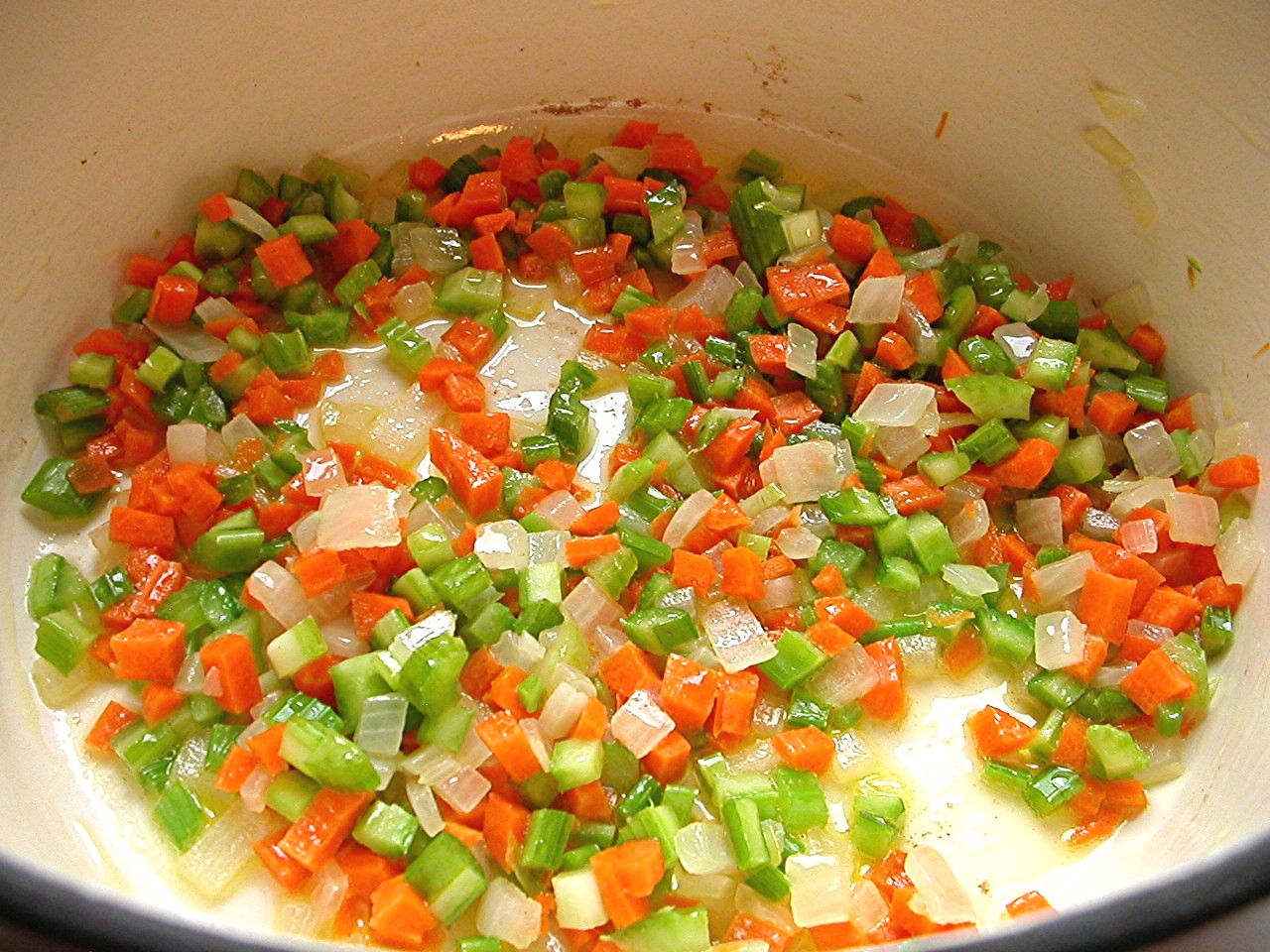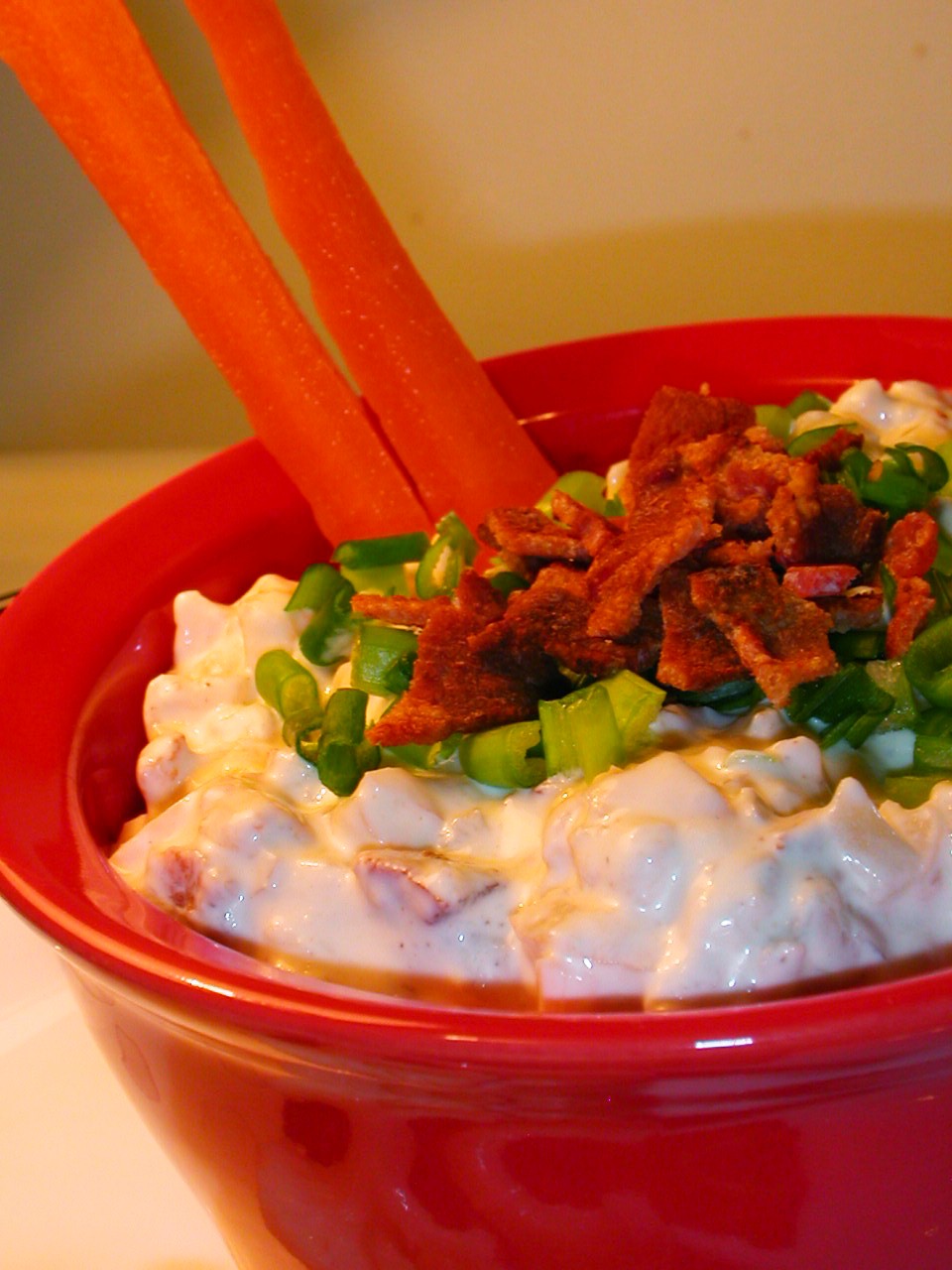I am not good at timing my cooking. I had grand plans for these potstickers to be part of an all day sporadic eating event during the NFL championship games. We’d eat potstickers in the first game, hot and sour soup at the beginning of the second game, and dessert sometime later. But my timing is so bad that I ended up sitting down with a plate full of potstickers right during halftime of the first game. Boring!
My plan got another wrench thrown in it after our first plate of potstickers, when we looked at each other and both said “we want more!” It’s always like that when I make potstickers – neither of us can ever get enough!
Another thing that’s great about potstickers is that they adapt to your schedule. You can make the filling and then forget about it until you’re ready, even if it isn’t until the next day. You can fill the potstickers and then forget about them for months! This time, I filled enough for our first serving, and then filled some more when we decided that we absolutely had to have more. I left the rest of the filling in the fridge overnight, formed more dumplings the next afternoon, and steamed them when we wanted to eat dinner. I was planning on freezing some for later, but it was clear early on that that wasn’t happening.
And you know what else? They’re actually healthy. Look at those ingredients – 3 cups minced cabbage, scallions, egg whites. Two tablespoons of oil in the whole thing, and to be honest, you won’t need that much with a good nonstick pan. I bet I only used a few teaspoons. So we can eat all we want!
Pork and Cabbage Dumplings – Wor Tip (from Cooks Illustrated)
We prefer to use gyoza wrappers. You can substitute wonton wrappers, but the cooking time in step 4 will be reduced from 10 minutes to 5 or 6 minutes and note that the yield will increase to 40 potstickers (see chart below Step 4 for more information). These dumplings, also known as potstickers, are best served hot from the skillet; we recommend that you serve the first batch immediately, then cook the second batch. To freeze, place filled, uncooked dumplings in the freezer in a single layer on a plate until frozen, then transfer to a storage bag. There’s no need to thaw frozen dumplings; just proceed with the recipe.
Makes 24 dumplings, 6 first course servings
Filling
3 cups minced napa cabbage leaves (about ½ medium head)
¾ teaspoon table salt
¾ pound ground pork
4 minced scallions (about 6 tablespoons)
2 egg whites, lightly beaten
4 teaspoons soy sauce
1½ teaspoons minced or grated fresh ginger
1 medium garlic clove, minced or pressed through a garlic press (about 1 teaspoon)
1/8 teaspoon ground black pepper
Dumplings
24 round gyoza wrappers (see note)
2 tablespoons vegetable oil
1 cup water, plus extra for brushing
1. For the filling: Toss cabbage with the salt in colander set over a bowl and let stand until cabbage begins to wilt, about 20 minutes. Press the cabbage gently with rubber spatula to squeeze out any excess moisture, the transfer to a medium bowl. Add the remaining filling ingredients and mix thoroughly to combine. Cover with plastic wrap and refrigerate until mixture is cold, at least 30 minutes or up to 24 hours.
2. For the dumplings: Working with 4 wrappers at a time (keep the remaining wrappers covered with plastic wrap), follow the photos below to fill, seal, and shape the dumplings using a generous 1 teaspoon of the chilled filling per dumpling. Transfer the dumplings to a baking sheet and repeat with the remaining wrappers and filling; you should have about 24 dumplings. (The dumplings can be wrapped tightly with plastic wrap and refrigerated for up to 1 day, or frozen for up to 1 month. Once frozen, the dumplings can be transferred to a zipper-lock bag to save space in the freezer; do not thaw before cooking.)
3. Line a large plate with a double layer of paper towels; set aside. Brush 1 tablespoon of the oil over the bottom of a 12-inch nonstick skillet and arrange half of the dumplings in the skillet, with a flat side facing down (overlapping just slightly if necessary). Place the skillet over medium-high heat and cook the dumplings, without moving, until golden brown on the bottom, about 5 minutes.
4. Reduce the heat to low, add ½ cup of the water, and cover immediately. Continue to cook, covered, until most of the water is absorbed and the wrappers are slightly translucent, about 10 minutes. Uncover the skillet, increase the heat to medium-high, and continue to cook, without stirring, until the dumpling bottoms are well browned and crisp, 3 to 4 minutes more. Slide the dumplings onto the paper towel-lined plate, browned side facing down, and let drain briefly. Transfer the dumplings to a serving platter and serve with scallion dipping sauce (see related recipe). Let the skillet cool until just warm, then wipe it clean with a wad of paper towels and repeat step 3 with the remaining dumplings, oil, and water.
Choosing the Right Wrap
Tasters preferred the slightly chewy texture of gyoza-style wrappers to thinner wonton wrappers, but both styles produced terrific potstickers. Although we developed our recipe using round wrappers, square or rectangular wrappers can be used as well. Here’s how to adjust filling amount and steaming time. Because the smaller wrappers yield more dumplings, you’ll need to cook them in multiple batches.
Instructions for different size wrappers:
Round gyoza (3¾ inches diameter), fill with 1 rounded tablespoon, steam for 10 minutes
Round wonton (3¾ inches diameter), fill with 1 rounded tablespoon, steam for 6 minutes
Square wonton (3 3/8 inches square), fill with 2 rounded teaspoons, steam for 6 minutes
Rectangular wonton (3¼ inches by 2¾ inches), fill with 1 rounded teaspoon, steam for 5 minutes
Scallion Dipping Sauce
The sauce can be refrigerated overnight.
Makes ¾ cup
¼ cup soy sauce
2 tablespoons rice vinegar
2 tablespoons mirin
2 tablespoons water
1 teaspoon chili oil (optional)
½ teaspoon toasted sesame oil
1 medium scallion , white and green parts, minced
Combine all ingredients in bowl and serve.



























